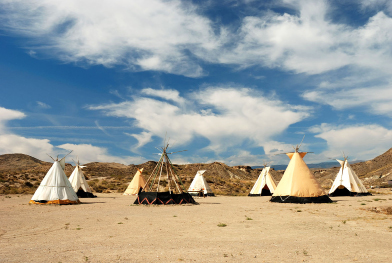Module 4
1. Module 4
1.23. Lesson 5
Module 4: Area
Lesson 5: Surface Area—Cylinders and Cones
Focus

© Philip Lange/shutterstock
If you designed and modified a habitat as your Unit 2 Project, you will certainly appreciate the ingenuity of the First Nation peoples of the Canadian Prairies. Their cone-shaped teepees, which were developed in ancient times and used for centuries, kept them dry and comfortable.
Teepees were warm in the winter and cool in the summer. They were easy to dismantle and to transport as the people followed the herds of buffalo, which provided food and shelter. Buffalo skins were sewn together to make the teepee covers.
The size and shape of the covers is an application of the surface area of a cone. In this lesson you will explore the surface areas of cones and cylinders.
Lesson Questions
In this lesson you will explore these questions:
- How can you determine the surface areas of cones and cylinders?
- What are some everyday applications of the surface area of cones and cylinders?
Assessment
You will complete the Lesson 5 Assignment Booklet for assessment. Download the Lesson 5 Assignment Booklet and save it in your course folder now. You will receive instructions on how to complete the Assignment Booklet later in the lesson. You will also be prompted to start working on the Unit 2 Project.
Remember to save all activities, including those that are not part of the Assignment, in your course folder.
Required Materials and Equipment
For this lesson you will need the following supplies:
- compasses
- scissors
- tape
- a calculator
- a cylindrical can with a label, such as a can of soup
- a cone-shaped paper cup